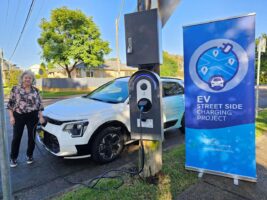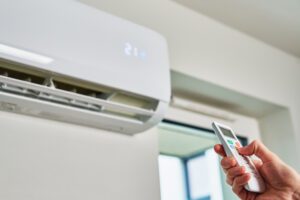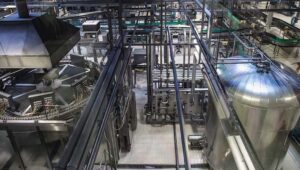The Southern states of Australia are facing a looming shortfall in domestic fossil gas supplies.
In its latest 2023 Gas Statement of Opportunities the Australian Energy Market Operator AEMO suggested all future energy scenarios “forecast the long-term need for additional supply.” This is despite the declining demand for gas.
However, a recent report by the Institute for Energy Economics and Financial Analysis (IEEFA), has found that the gas shortfall could and should be eradicated by greater energy efficiency and electrification in our homes and industry, not by new gas supplies.
“Interventions could be implemented in the coming years and deliver material gas demand reductions by 2027 when the gas supply gap is first expected to materialise,” the Reducing Demand: A Better way to Bridge the Gas Supply Gap found “42% of gas use could be reduced by 2030.”
The interventions which IEEFA modelled found residential gas use could decrease to zero by 2042, and industrial gas use by 63% by 2045, compared to 2022 rates.
Ending the sale of new gas appliances for residential buildings, and installing more heat pumps throughout industry will deliver the greatest outcome.
“The largest opportunities to reduce gas demand are to electrify residential heaters and water heaters, and industrial heating processes in sectors like food manufacturing,” says Amandine Denis-Ryan, chief executive of IEEFA Australia and the report’s author. “Heat pumps use about 5 times less energy than gas boilers to provide the same heat.”
Denis-Ryan argues that government agencies like AEMO don’t focus enough on demand-side solutions like energy efficiency and have a “supply-side bias” when looking at solutions to the gas supply gap, which means they primarily focus on increasing supplies rather than reducing demand.
“We would like [AEMO] to comprehensively identify and assess the opportunities to reduce gas demand,” says Denis-Ryan. “We believe there is a compelling financial and economic case to prioritise demand reduction over supply increases.”
The IEEFA report found that Investments in energy efficiency and electrification will also reduce energy bills, whereas every dollar invested in new gas supplies, along with the profit margins the gas companies add on, will be recovered by increasing householder bills.
The Intergovernmental Panel on Climate Change (IPCC) and the International Energy Agency (IEA) have both made it clear that to achieve the objectives of the Paris Climate Agreement no new oil or gas developments can be built. If Australia pursues new gas supplies to cover the energy shortfall, it will undermine the government’s emissions reduction efforts.
The International Energy Agency, in its April 2023 review of Australia’s energy policies, also found that our energy efficiency improvement rates have slowed to about 1.9% per year, whereas energy efficiency policies globally have increased. The IEA recommends this needs to increase to 4.2% a year until 2030 to align with the IEA’s Net Zero roadmap.
In addition to reducing costs for householders, energy efficiency and electrification provide additional benefits. Improving a home’s thermal efficiency can deliver 10 times as much savings in health costs as in energy costs, along with improved wellbeing. Using electric cooktops, for instance, rather than gas, reduces the risk of childhood asthma.
Investments in energy efficiency also deliver economic benefits. For instance, nearly three times as many jobs are created compared to investing in new fossil fuel production.
IEEFA found that the highest savings can be achieved when demand-side solutions are carried out together. Improving the thermal efficiency of a home at the same time as electrifying heating could help reduce the size of the heat pump required to heat or cool a home. This makes electrification more financially accessible by reducing the capital costs required for new equipment.
“If done well, electrification can not only help eradicate the gas supply gap, but also support the decarbonisation of the electricity system,” says Denis-Ryan.
She also maintains that increased electrification won’t lead to costly impacts for electricity distribution networks, and in fact has the potential for cost savings rather than be a cost burden.
“Efficient and flexible electrification could reduce rather than increase electricity system costs by matching renewable generation profiles.”
In other words, adapting the consumption of electricity to match the times when renewable energy sources are most abundant.
“We estimated that the gas cuts modelled would only require a 2% increase in electricity use in the Southern states,” says Denis-Ryan. “This new demand could be made flexible – in particular hot water heaters and industrial heat pumps – which would help reduce peak demand and system costs.”










